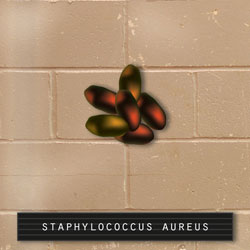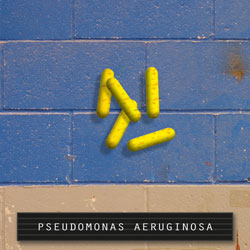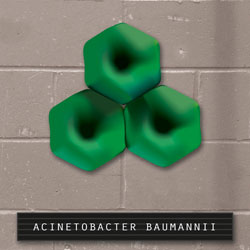 |
 |
 |
 |
What, exactly, are we talking about when we talk about drug-resistant bacteria? The most common contaminants in hospitals these days are the ever-present Staph aureus, a strain of enterococci that is resistant to vancomycin, and the bugs known as gram-negative bacteria, which include Acinetobacter, Pseudomonas, and Klebsiella bacteria.
You can think of these complicated names as longer ways of spelling pneumonia and diarrhea—the two most common illnesses that result from infections by bacteria—though their effects can range from wound infections to urinary tract infections to more serious complications such as sepsis.
A troubling development is the newfound resistance of some strains of these bacteria to Ciprofloxacin, one of the most popular and effective antibiotics. Craig Hoesley, M.D., says that one recommendation of UAB's Hospital Pharmacy and Therapeutics Committee has been to adjust the hospital's use of Ciprofloxacin, as well as other commonly used antibiotics such as vancomycin and linezolid, which are also becoming increasingly ineffective against some bacterial strains.
"We could turn the tables by not giving patients antibiotics until we know exactly what they're infected with," Hoesley says. If bacteria aren't exposed to these antibiotics for a while, their susceptibility should increase. So if suitable alternatives can be found, simple rotations of antibiotics could keep infections in check. "Other than good hand-washing hygiene," says Hoesley, "the way a hospital manages its antibiotic use is probably the most important thing in infection control."